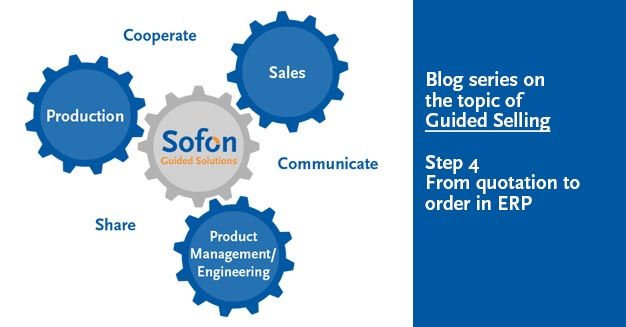EXCEL VS. CPQ (EN)
THE ‘SPREADSHEET TRAP’ IN SALES: WHY SHOULD YOU REPLACE AN EXCEL SOLUTION WITH CPQ?
The Excel spreadsheet lurks around every corner of your sales quotation process.
It’s big, it grows rapidly and, beyond a certain complexity, it also presents its unruly side at the expense of the productivity of your sales unit.
Your team has built it up for years and fed it with data, making its replacement or the use of other methods very difficult.
Your internal ‘Excel Intelligence’ probably thinks that it’s a ‘kind of hand-built Ferrari’. People are proud and have therefore established an emotional bond. However, Excel-based sales management is simply out of date in the CPQ age, as the benefits and limited scalability don’t justify the cost-benefit overhead. This view is confirmed by validated empirical values derived from practice.
Of course, an Excel solution offers some ‘employment guarantee’ because there are few in the business that can tame the monster. At first, sales staff don’t complain because changes always go hand in hand with discomfort. Besides the effort, the pain of change is also accompanied by susceptibility to error.
‘The bottom line is that, in the CPQ age, arguments for classic spreadsheets prove inadequate, especially in companies with increasing optimisation and export requirements’
Paul Kimmel, engineer, founder and CEO of Sofon Guided Solutions
While Excel is the industry standard for spreadsheets, it has significant drawbacks when it comes to creating sales quotations and more complex activities. There are too many important functions that Excel and many ERP and CRM systems (i.e. ‘stand-alone’ solutions for sales staff and managers) simply can’t perform well enough:
1. Setting rules
Adding new rules can be a laborious process. The formulae are abstract and tables can be very confusing for anyone who doesn’t update the spreadsheets daily. Generally, a sales department relies on an ‘Excel guru’ to manage the quotation system and keep the rules up-to-date. In many organisations, it takes days and many tests for new rules to work correctly. Often, existing errors may even be copied.
2. Approving a quotation
For many organisations, it’s particularly difficult to send error-free and approved quotations to the customer in a timely manner. This is usually a lengthy process because internal & external sales personnel need to enter information in the spreadsheets that has been gathered from various price lists and departments. Did the sales department use the latest price sheet? Were the right combinations of options and service plans chosen? Is this a special price request that requires additional approvals? This manual quoting process requires a variety of individual plausibility checks and approval processes, which slow down the process and make it prone to error. These are errors that cost a lot of money and undermine the overall cost calculation.
3. Scalability
As companies grow, as do their product and service offerings. Consequently, their Excel spreadsheets become ‘bloated’ and increasingly expanded.
At some point in time, it will be impossible to continue manual quoting for complex products and recurring services, whilst the demand of potential customers for quick and precisely calculated quotations grows.
4. Maintenance
Compared to established CPQ solutions, the risk of failure in Excel is very high. Whenever ‘Excel intelligence’ is unavailable or on holiday, users are likely to have difficulties and be unable to independently perform calculations or even unlock, update or repair the spreadsheet. Furthermore, there’s a risk of losing direct access to the location of the files, backups being accidentally overwritten or deleted and version management being neglected.
5. Real-time data
A major disadvantage of the cumbersome manual generation of quotations is that you can’t directly view your sales funnel or ‘pipeline’ and evaluate it from a cross-departmental perspective. Sales managers have little or no insight into the exact history of quotations, their status, the responsible sales person or sales partner, despite the use of a modern CRM solution.
Without intensive, customer-specific reporting and employees generating these reports on a regular basis, it’s difficult to link your quotations to an opportunity, preventing you from appraising the real value of your quotations in real time.
6. Error vulnerabilities
The problem involving costing and quoting with which many Excel users find fault concerns the fact that, due to the complex underlying formulae, the most minor changes can lead to major errors. These are then copied and even magnified as parts of updates and extensions.
7. The ‘black box’ phenomenon
The term ‘black box’ originally came from military telecommunications technology and referred to a captured enemy device that could not be opened due to the ‘explosive charge’ possibly contained in it (source: Wikipedia).
In a figurative sense, this also applies to complex Excel spreadsheets, because beyond a certain complexity, the risk of total failure increases.
Conclusion:
We know that many sales departments in SMEs and their sales-responsible employees like to view the Excel-based administration of quotation processes as a kind of solid foundation.
However, practice clearly shows that only a CPQ solution can meet the growing demands of the market.
Local or cloud-based CPQ software can free your sales team from the spreadsheet monster, enabling you to maximise the value of each sale faster and, most importantly, with greater reliability.
It should be emphasised that CPQ integration can be completely independent of your existing ERP or CRM system because it can be integrated both visually and technically in a seamless manner.
Learn more about what you can do with automated CPQ solutions and how to reach your sales goals even faster.
Follow our LinkedIn company page to stay informed of all our blogs.






